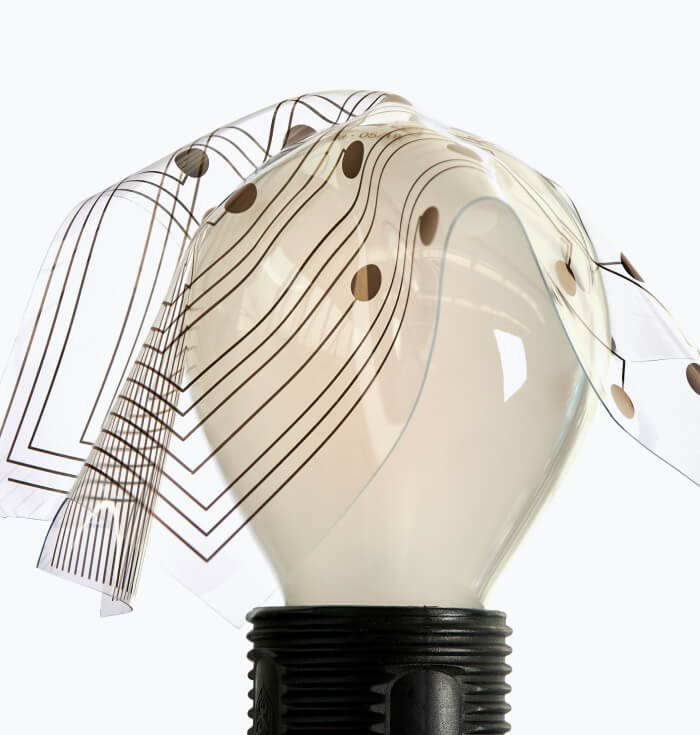Electrically neutral nanoparticles are shot at high velocity toward the polymer base. Thanks to their inertia, the nanoparticles are implanted inside the polymer as bullets fired at a soft target, forming a conductive nanocomposite layer.
With our technology, we can manufacture electrodes that are strongly attached to the polymer and are stretchable, flexible, biocompatible (medical grade) and allow effective stimulation and recording. Furthermore, our technology allows us to embed electrodes in foils as thin as a few microns, without damaging the foil itself. We can produce electrodes with any number of contacts of any shape, density or size, ranging from micro to macro scale.
The Supersonic Technology is protected by patents granted in Europe, USA, Israel, Canada, India, Japan and Korea.






